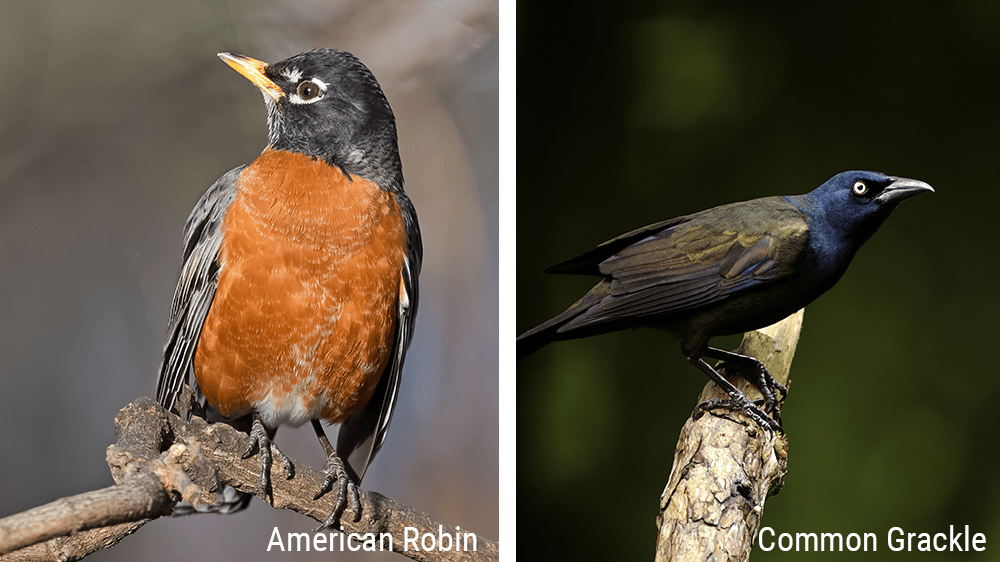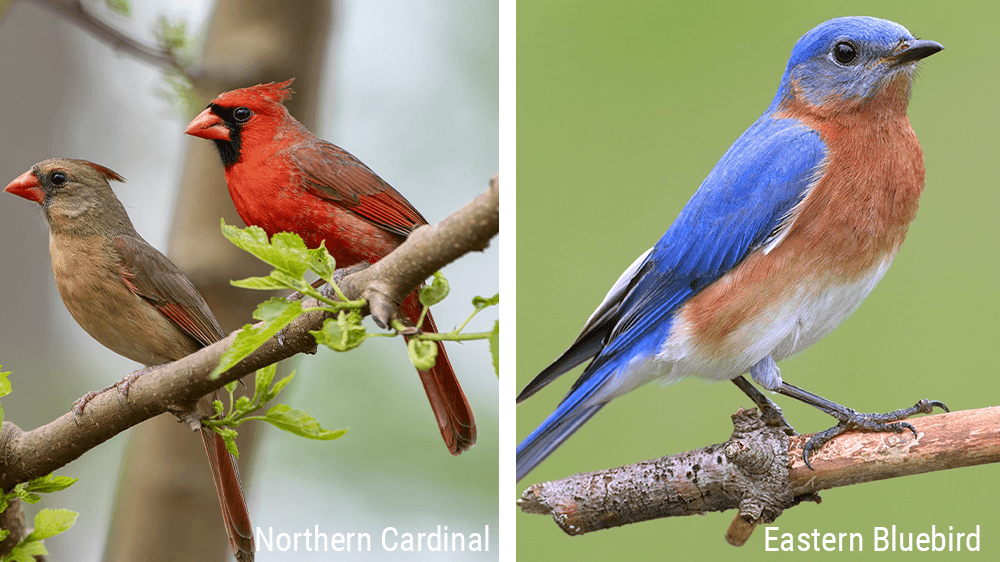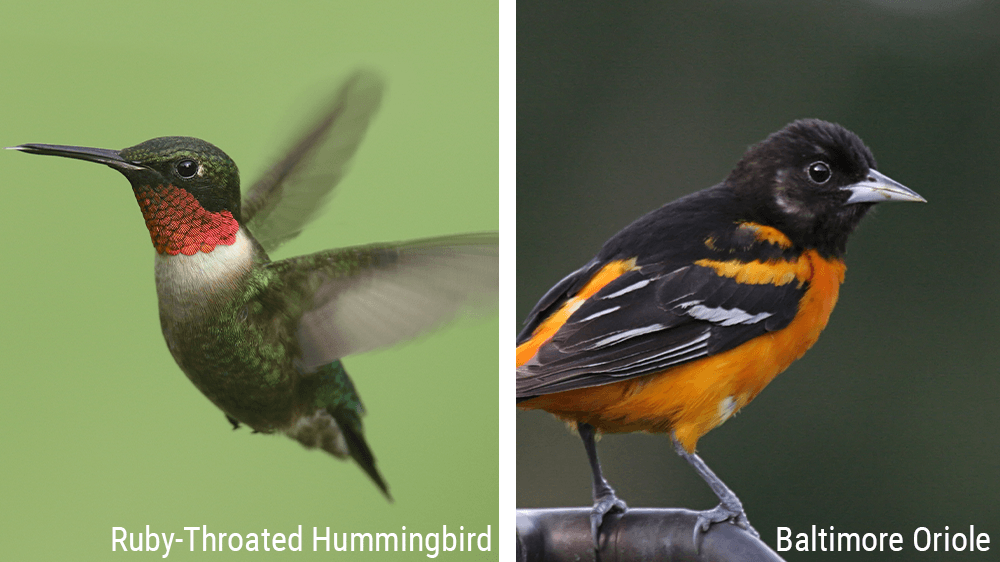Illinois and Indiana are home to some of the most beautiful wild birds, and if you’d like to make their backyard visits a more common occurrence, there are plenty of ways to attract them! Learning to identify and attract common backyard birds makes lazy weekends on the lawn all the more enjoyable. Here’s a crash course on common backyard birds so that you can flex your knowledge of ornithology!
The Most Common Backyard Birds & How to Attract Them
There are so many reasons why you should start attracting birds to your backyard! Their beautiful colors and pretty songs transform the backyard into quite an idyllic scene. Plus, they’re great for garden pest control, happily munching up cutworms, and other annoying bugs. Here are some of the most noteworthy birds you’re likely to encounter in your backyard.
American Robin
What’s the most common bird in Illinois? The American robin! This adorable songbird has a greyish-brown body, a bright orange belly, and a sunny yellow beak. One of their favorite foods is sunflower hearts—or rather, sunflower seeds with the shells removed. Our No Melt Suet Dough from Sunflower Delight is a fantastic way to attract these pretty robins to your backyard, and you can use it year-round!

Common Grackle
You’ll be amazed by the beautiful, iridescent sheen of this bird’s glossy plumage. It’s dark in color and slightly longer and slimmer than a blackbird, but with a teal green flush on its head and splashes of gold and purple throughout its wings and body. They love eating corn, so our Nature’s Select Cracked Corn will help lure them in.
Northern Cardinal
This backyard aviary has a feathery tuft atop its head that sticks out in a triangle shape, kind of like a mohawk. The males are an ultra-vibrant red shade, while the females are a soft taupe color. Both have a black face and orange beak. Our Cardinal Safflower Classic Seed Log will draw in Northern cardinals like a magnet!

Eastern Bluebird
As you can probably guess by the name, this backyard bird has beautiful blue feathers. However, as is common in the bird world, the males are much brighter than the females. Their bodies are primarily blue with sandy brown bellies, whereas the females are sandy brown with a hint of blue in their tail feathers. Attract them with our Bluebird Nuggets made from corn, oats, raisins, roasted peanuts, beef suet, and soy oil.
Downy Woodpecker
The smallest of the woodpeckers, this fascinating backyard bird is known for its distinctive black and white striped wings. The males have a bright red spot on the backs of their heads. While they’re known for tap-tapping on trees to snack on bugs hiding beneath the bark, they’re sure to visit your backyard if you hang up one of our Pine Tree Farms Woodpecker Classic Seed Logs.

American Goldfinch
Nothing brightens up an afternoon on the patio like a wild goldfinch sighting! These sunny yellow beauties have such a sweet and cheerful appearance, with striking black and white markings on their face and wings. Our Bird’s Favorite Goldfinch Feed is formulated with their favorite foods: thistle and sunflower seeds!
Ruby-Throated Hummingbird
There’s something so breathtaking and magical about hummingbirds as they flit about the yard, hovering midair and then disappearing in the blink of an eye. They have shiny emerald green bodies with white bellies and—you guessed it—ruby red throats. Hummingbirds sip on flower nectar, and they’re most attracted to red, tubular flowers, so planting these in your garden will attract them. Alternatively, you can use a red-colored nectar feeder and fill it up with our Pennington Hummingbird Nectar.

Baltimore Oriole
This oriole species has a super bright tangerine-colored belly, a black head and body, and white stripes across its wings. Similar to the hummingbird, they prefer to drink nectar, so a nectar feeder filled with our ready-to-use, dye-free Sweet Nectar Oriole Nectar should do the trick.
Alsip has the best selection of wild bird seeds in Frankfort, Illinois, and St. John, Indiana, so visit us soon to stock up on snacks to feed the local wildlife! They’ll certainly appreciate the extra food source—especially in winter!

